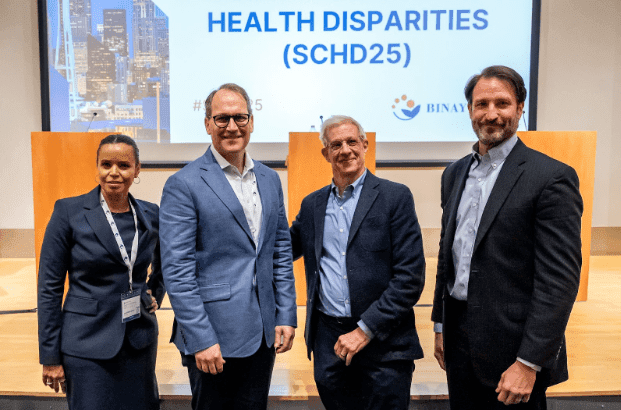Crisis In Care: Can The U.S. Find A Sustainable Model For Affordable Healthcare?
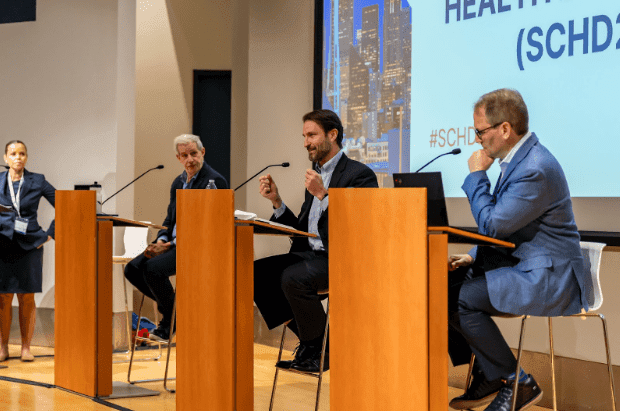
Author
Binaytara Team
Introduction
If patients cannot access care today, who is paying for the innovations tomorrow?
The Summit on Cancer Health Disparities reached its peak with a profound closing debate session, entitled: Crisis in Care: Can the U.S. Find a Sustainable Model for Affordable Healthcare? The purpose of this session was to have a robust discussion on whether the United States can achieve a sustainable, affordable healthcare model, focusing on crisis and care.
Within short time constraints for each panelist, the debate was structured in the format of introduction, structured questions, open responses, lightning round, audience questions, and closing statements. Moderated by CBS 48 Hours correspondent, Anne Marie Green, and featuring renowned experts, the Chief Executive Officer of the Patient Advocate Foundation, the president of the Leukemia & Lymphoma Society, and, professor of Health Systems and Population Health at University of Washington, the debate took on some of the pressing issues that persist within cancer care and delivery in the US.
Disclaimer: The views and opinions expressed by the moderator and panelists are their own and do not necessarily reflect the official positions of their affiliated institutions. Some responses are based on the moderator’s and panelists' expertise and professional experience.
ROUND 1
To set the stage for the debate, each panelist offered their perspective on the fundamental issues within the U.S. healthcare system. A recurring theme was fragmentation. The conversation then turned to key cost drivers and systemic inequalities that make care unaffordable or inaccessible for many Americans. Panelists debated whether reform should build on existing structures or move toward a more centralized model. They also discussed the potential impact of a public option, emphasizing the need to protect vulnerable populations during any policy shift.
Fundamental Issues Within The U.S. Healthcare System

Dr. Kessler: "There Is No 'A' U.S. Healthcare System"
"Here is what I want you to remember throughout this discussion: there is no U.S. healthcare system. It does not exist the way systems do in the U.K. or Singapore. The care I get, the care Andy gets, the care everyone in this room gets, might come from six, eight, fifteen, even twenty different systems. And fundamentally, there is no one person or entity in this country in charge of your healthcare. We are trying to solve a problem without actually having a target. Equally concerning are the significant barriers patients face in accessing affordable, high-quality care.”
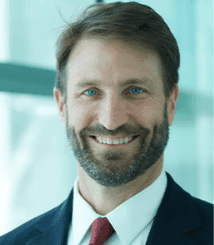
Dr. Balch: "Can And Should We Build A National Healthcare System, Or Do We Take What We Have And Build From There?"
"Our healthcare system is essentially a collection of local and regional systems that work adequately for about two-thirds of patients, providing some affordable, quality care. But it fails significantly for the remaining third who desperately need better access to basic healthcare services. While efficiency matters economically, patients never cite it as their priority in our surveys. Regarding innovation, America drives 41% of global biotech advances, particularly in cancer care. We are seeing unprecedented approval of transformative drugs. Yet these breakthroughs remain costly, complex to administer, and often inaccessible. This unsustainable situation demands urgent attention to the entire treatment access pipeline."
Cost Drivers and Systemic Inequalities

Moderator: "If You Could Implement One National Policy Today To Meaningfully Reduce Healthcare Costs, What Would It Be?"
Dr. Kessler On Redesigning The Current Structure
"If I were granted a single policy change by a magic wand, it would be to transform our current system into a single-payer model, one that guarantees a baseline level of coverage for all. Having one without the other would not make sense. Administrative costs account for 15 to 30 percent of total U.S. healthcare spending. While we cannot eliminate them, drastically reducing these costs would significantly improve the system's efficiency."
Dr. Balch On Social Perspective
"I think we place too much emphasis on innovation as purely technological or medical, when in fact there is an entire realm of social innovation that is just as vital. And, like medical breakthroughs, social innovations often reach the patients who need them the least, or the latest. If we expand our view of innovation to include approaches like palliative care, we begin to see it as both a social and medical innovation, one that can improve outcomes and reduce costs. Similarly, using community health workers and patient navigation to address social needs within care models is a powerful form of innovation that can reach the most vulnerable and lower overall costs.”
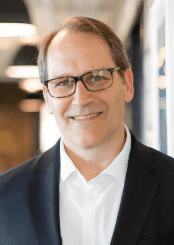
Dr. Kolb On The Lifelong Value Of Cancer Care
"There is no choice. Personalized and precision care is cancer care. It is the standard today. Yes, these therapies are expensive when viewed by the bill or by the year, but we are not accounting for the alternative costs. Data shows that advancements in blood cancer research have contributed 21 million years of life over the past 50 years, years gained with lower toxicity and, in many cases, lower overall costs. When I was a fellow, chronic myelogenous leukemia (CML) was treated with interferon, essentially glue in a bottle, and bone marrow transplants. The side effects were severe and often life-altering. Then came imatinib in the late '90s. Today, for $120,000 a year, CML patients can expect a normal life span. So, this is not just about reducing costs, it is about understanding the value of precision care over a lifetime."
Public Option And Policy Shifts
Moderator: “Is Introducing A Public Option A Good Strategy For Addressing Affordability Gaps?”
Dr. Kolb On Protecting Vulnerable Patients During Policy Shifts
"Patients dependent on life-saving care. Those who must regularly pick up prescriptions just to survive are often the most affected by policy changes. As a pediatric oncologist, I see this daily: more than half of our patients rely on Medicaid coverage. Sudden policy shifts force them to scramble, wondering if their medication will still be available or if they will need to find a new doctor when they are abruptly dropped from the system. This population is incredibly vulnerable."
Dr. Balch On Holistic Healthcare System Reform
"While policy evolution is necessary, we must implement changes carefully. From my perspective (not an official position), I strongly believe in maintaining accessible options like Medicare buy-in programs. These safety nets are vital. When we discuss healthcare reform, we are talking about life or death for these patients. Healthcare is not a single system. It is an interconnected network comprising safety nets, care delivery, innovation, and payment systems. True reform requires alignment across all these components. Simply making one element government-run while leaving others misaligned will inevitably create gaps and dysfunction. Take South Korea's often-cited national health insurance as an example. Their success stems from a comprehensive three-tiered approach: 1) Social insurance covering multiple needs beyond healthcare, 2) Public assistance for basic livelihood services, and 3) Specialized welfare programs for vulnerable populations.
This demonstrates that effective reform requires more than just changing payment models. We need integrated social welfare systems where healthcare is one coordinated element among many."
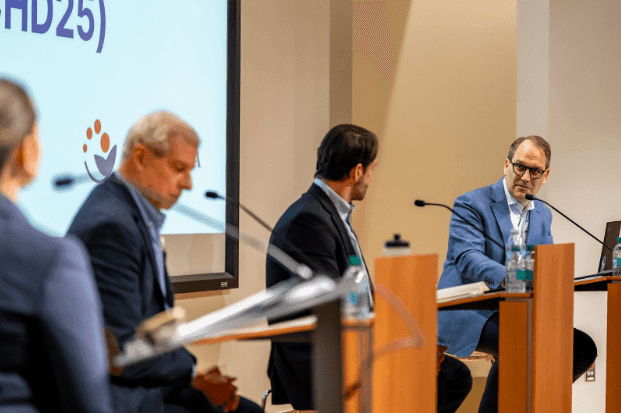
ROUND 2
Building on the foundational issues raised in Round 1, the second round explored larger forces shaping healthcare delivery in the United States. Panelists examined the tension between government and market approaches, the structure of research funding, and the relationship between innovation and affordability. They also discussed how cultural attitudes and policy decisions interact to deepen or bridge healthcare disparities.
Government vs. Market Forces
Moderator: “Can A Largely Privatized Healthcare System Truly Deliver Equitable Care? Or Is There A Blend Of Both Public And Private Approaches That Works Better? And If So, Should That Balance Lean More Heavily In One Direction?”
Dr. Kolb On Defining Healthcare As A Fundamental Right
"Today's discussion revealed we still lack consensus on whether healthcare is a basic right. This foundational question must be resolved first. We need a national agreement that healthcare is indeed a human right in America. Only then can we properly address implementation challenges. The financial implications would be significant, but we must weigh these costs against the profound societal returns on such an investment. Our current system already carries substantial hidden costs: the inequities in access, the barriers to consistent care, even the cumulative burden of seemingly small expenses like parking fees that prevent patients from keeping appointments. When examined holistically, our fragmented approach ultimately costs us more, both financially and morally, than establishing healthcare as a universal right would."
Dr. Kessler On America's Unique Healthcare Challenges
"Our healthcare system faces two critical limitations that set us apart from other nations. First, we have a severe shortage of primary care clinicians, particularly in minority communities. Second, we grapple with vast geographic barriers in rural America. This is not about race or ethnicity, but pure logistics.
When comparing to European systems, we often overlook that countries like England or the Netherlands do not face our geographic scale. In parts of rural America, patients may be hundreds of miles from critical care, a challenge with no simple solution.
While improvement is possible, we must acknowledge these hard limits. The most pressing constraints involve access to care itself, not just financial considerations."
Dr. Balch On America's Healthcare Identity Crisis
"Our fundamental challenge is that we have refused to choose a guiding principle for healthcare distribution. We demand free markets yet insist on government regulation; we want breakthrough innovation but also price controls. Economically, these are incompatible goals. You must prioritize one framework while borrowing selectively from the other.
A primarily government-run system may improve equity and efficiency. But it will not eliminate all disparities. Conversely, a free-market approach could lower costs, but it will inevitably leave vulnerable populations behind. Neither model automatically serves those with the greatest need.
The critical question is not which system we adopt, but how we design safeguards to protect high-need patients. However we structure care, we must deliberately address the access gap, because without intervention, both markets and bureaucracies will overlook the sickest and poorest among us."
Research Funding
Moderator: “Is Our Current Approach To Funding Research And Innovation Contributing To The High Price Of Healthcare, Particularly For Essential Drugs? And If So, Does The Funding System Itself Need To Change?”
Dr. Kolb On Research Funding As An Investment
"There was a great editorial in Nature a couple of weeks ago about NIH funding. It pointed out that NIH goes back, very wisely, to the New Deal. When FDR dedicated the first NIH building, he framed it as an investment not just in industry but also in health and knowledge.
Since then, we have become a world leader in science, drug development, and innovation. If you look at other New Deal programs like those for agriculture, steel, or autos. They did not last. But NIH? That one stuck. It is still working. So to disrupt that, to gut NIH, would be devastating."
Dr. Kessler On Research Costs and Shareholder Pressure
"One issue is that many drug companies are publicly traded, especially foreign ones. That means they have to deliver quarterly profits for shareholders. That is just the reality. I am not saying it is ideal, but it shapes how these companies operate.
Bringing a drug to market costs about a billion dollars. We could make that process less expensive, and there are scientific ways to do it. But we rarely talk about those. We just absorb the costs, and it has been that way for decades.”
Dr. Kessler On Prevention And Health Literacy
“Let me mention two other things, maybe off-topic but important. One is prevention. There are only five or six evidence-based ways to prevent cancer. Two big ones are obesity and alcohol. Diet, too. These matter for cancer and many other diseases. But we do not know nearly as much about prevention as we think we do. Tobacco is still a huge problem. Colorectal and cervical cancer prevention are success stories, thanks to early detection. But beyond that, we do not have much. We also have a massive health literacy problem. This is true for cancer and for other diseases. It is not political. It is personal. The gap in what people know about their health is huge. We could actually fix this."
Cultural Factors Vs. Policy-Driven Factors
Moderator: "To What Extent Are Healthcare Disparities Driven By Cultural Factors, Such As Public Trust In Science, Perceptions Of Patient Roles When Sick Versus Healthy, And General Attitudes Toward The Healthcare System Versus Policy-Driven Factors?"
Dr. Kessler On Screening And The Cost Paradox
"One thing to understand is that screening does not save money. It actually increases costs. That may sound strange, but it is true. Take mammography for breast cancer: it extends life, which is great. But people who live longer end up needing care for dementia, kidney disease, and other expensive conditions. If you were purely focused on cost, it would be more 'efficient' to have people die younger. Obviously, that is not what we want. But it shows how complicated this is."
Dr. Kolb On Culture And Mistrust
"On the culture point: some of this is on us. I was struck by what one speaker said yesterday about how underserved groups were left behind during the COVID pandemic, especially with vaccines. Education was not tailored to their needs or the information channels they used. So yes, culture plays a huge role. Access and uptake of screening and prevention are shaped by culture. Our education system assumes a baseline level of knowledge that many people do not have."
Dr. Balch On Policy And Politics
"Policy matters too. We have great, complex policy ideas. But implementation always gets stuck in politics, and politics is shaped by culture. In the U.S., there is a strong value on rugged individualism and personal freedom. That's not good or bad. It is just reality. Any solution, whether it is economic or policy-driven, has to be framed through that lens. If it does not center the individual, if it does not speak to 'you', then it is not going to gain traction here.”
Dr. Kessler Added On Behavior And System Design
"Honestly, we are lazy. As a country, we have engineered our systems for convenience, not health. Whether it is walking, eating better, or screening, none of it is fun. People would often rather take a pill than change their habits. That's not unique to any one culture. But it is especially hard here. You tell someone to stop eating red meat, and they think you are crazy. They would rather deal with cancer later. And in many communities, like the Native American areas. Even basic access to healthy food is lacking. It's not just individual behavior. It's structural."
Innovation Vs. Affordability
Moderator: "Critics Of Cost Reform Argue It Stifles Innovation. What Real-World Examples Demonstrate That Cost Containment And Medical Innovation Can Successfully Coexist?"
Dr. Kessler
"With all due respect to my moderator from Canada, many countries in the European Union provide healthcare that is significantly more affordable, often with higher quality, and they still manage to support innovation. I am familiar with the UK's National Health Service. It's not perfect, trust me, but I'll give you an example of where they have really stepped up. A few years ago, the NHS partnered with a group called GRAIL to conduct a randomized trial of the first multi-cancer early detection blood test called the Galleri test. They enrolled about 140,000 people in just 10 or 11 months, randomly assigning some to receive the test and others not. The results of that trial are expected around this time next year, maybe late 2026. This trial could be transformative. It's not just about detecting cancers, we already know how to screen for breast or colon cancer. But also hard-to-detect ones like bladder, GI, and pancreatic cancers. The potential to use blood as a cancer signaler is huge. It could fundamentally change how we find and treat cancer."
Dr. Balch
"I am not going to double down on the earlier point, but I do want to emphasize that there are models of care that not only improve outcomes but also reduce costs. One example is the patient-centered care model that starts with the fundamental question: 'What matters to you?' Not 'What's the matter with you?' but 'What matters to you, the patient?' This model includes care focused on the whole person, alongside but distinctly different from disease-directed care. It's not just about treating illness; it is about supporting quality of life."
Moderator: "How Should We Measure Innovation, Or Should It Be Based On Commercial Success, Or Where Should Our Focus For Innovation Be?"
Dr. Kolb
"I have probably published more negative studies than any of my peers. They do not get much recognition. But those negative results can be incredibly valuable. They often save our most precious resource: children with cancer who might otherwise be enrolled in a phase I trial that has no real chance of success. So yes, commercial success matters because the system needs to sustain itself. But that billion-dollar figure Dr. Kessler mentioned? Much of that goes toward failures, and we need to recognize the value in those failures. If you look at the odds, for every 500 new molecular entities, maybe one becomes a drug. That's the reality of discovery.
Science is fundamentally about trying to prove the null hypothesis. It is built on failure, with the hope of success. So while commercial viability is important, we have to preserve the integrity of the scientific method, which includes having patience for negative or inconclusive results.
This is where the system often breaks down. For example, some companies are not primarily paying for innovation. They are paying for the acquisition. The actual risk, the foundational science, is mostly taken on by smaller players who operate on limited time and funding."
Dr. Balch
"I just want to add to this, in keeping with my earlier theme, how we measure a healthcare system reflects what that system is designed to do and to scale. In other words, measurement tells you a lot about intent. We have to decide what kind of system we actually want. Should we move toward something more centralized, more regulated, more government-run? I could easily make the case for that. It would align well with a public health approach, which makes a lot of sense when addressing population-level issues.
But culturally and probably realistically, the U.S. is more likely to go in the opposite direction: less centralized, more patient-focused. If that is the case, then our metrics should reflect that. We would need to shift toward individualized measures, patient experience, outcomes that matter to each person, not just populations.
These are two very different directions. Neither is inherently wrong, but we have not clearly chosen a path. And in the absence of that clarity, we just keep layering on fixes, creating more confusion, and breaking different parts of the system in the process."
Dr. Kessler
"At first, I thought the answer was commercial success. That seemed like the logical benchmark. But if you look closely, what we often measure as commercial success ends up being a stream of 'me-too' products, small, incremental improvements that cost a lot of money without meaningfully moving the needle. So, I have come to believe that public health outcomes should be the most important measure. That is where the real value lies. At the same time, I want to strongly endorse what Alan said about patient-centeredness. We have to make sure we are never filling the system with things that do not matter to the people we serve. 'What matters to Dan' should stay in the portfolio, not just what matters to data sets or systems."
Moderator: "You Talk About Patient-Centered Care, And I Imagine That Is Incredibly Challenging, Especially In A Country As Diverse As Ours. There Is A Vast Range Of Needs And Expectations That Patients Bring To The Healthcare System. So We Are Trying To Build A System That Is Broad Enough To Meet The Needs Of The Majority, Yet Flexible Enough To Respond To Individual Differences. It's Like A Mosaic: Many Distinct Pieces, Each With Unique Needs, Coming Together To Form A Complete Picture."
Dr. Kessler
“The key is to talk to patients. Get them in the room. Ask them what they care about. They will likely agree on the first few priorities and diverge on the rest. But the shared concerns will be clear. Whether it is about policy, treatment, or even issues like smoking in care environments, what matters is giving them a voice. Historically, we have not done that well. Only in the last decade have we started to include patients in a meaningful way, and even then, not consistently. That has to change."
Dr. Balch
"I am talking about direction. You cannot engineer a system for just one person, but you also cannot design one for 350 million. We need to be brave enough to think in subtypes or segments. Something the market already does, though not always well. We often talk about market segments to understand consumer needs; we should apply the same thinking to healthcare. Rather than a one-size-fits-all approach, we can identify patient archetypes, not just based on genetics, but also on social vulnerabilities, caregiver gaps, and other consistent factors. Yes, there is a risk of stereotyping, but if we do it thoughtfully, we can build systems that respond to real, recurring needs within specific populations.
It's not about creating a system for everyone or just one; it is about being strategic, recognizing patterns, and designing resources that better serve different types of patients. That's where real progress lies."
Dr. Kolb
"This is critical. When the total cancer genome was sequenced about a decade ago, pediatric tumors were included thanks to efforts like the Gabriella Miller Kids First Initiative. That work revealed what pediatricians already suspected: the genomics of pediatric cancers are vastly different from adult cancers. This has major implications for drug development, resource allocation, and how we treat and test pediatric patients. And it all started with patients and families raising their voices."
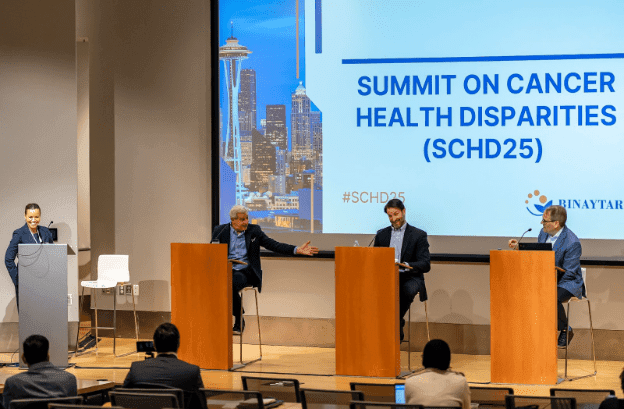
LIGHTNING ROUND
In this round, panelists have 15 seconds to answer rapid-fire questions.
Moderator: “Name One Country The United States Needs To Learn From Their Healthcare System, And Why?”
Dr. Kessler
"I often point to the Netherlands. In my experience, speaking with their researchers and healthcare professionals, they do an impressive job of integrating lifestyle, healthcare delivery, and research. Their approach feels thoughtful and well-coordinated, and I find it genuinely enlightening."
Dr. Balch
"I would point to Australia. I lived there as a child, so I have some familiarity, but I also think it is a useful comparison because culturally and politically, Australia shares many similarities with the U.S. What makes it a compelling model is that, unlike the U.S., Australia has moved toward a more centralized, government-regulated healthcare system, something closer to what I have been describing. Canada is often mentioned, but its decentralized structure makes it a bit less comparable in some ways. If the U.S. were to seriously consider a shift toward a nationalized healthcare system, Australia might offer the clearest roadmap for how to get there."
Dr. Kolb
"South Korea"
Moderator: “Single Payer Or Multiplayer, Which Is More Scalable In The U.S.?”
Dr. Kessler
"Single-payer would be more scalable, but politically, it is unlikely to happen anytime soon. Part of the problem is historical: our healthcare system became tied to employment during and after World War II, and that model has only become more entrenched over time. If we are serious about reform, we must rethink that structure entirely. We have to find a way to decouple healthcare from employment so that people can move between jobs or employment statuses without losing coverage. That is the kind of systemic change required to make healthcare more scalable and sustainable."
Dr. Balch
"This might be surprising, but in my view, a single-payer insurance system alone is not enough. Just paying for Medicare through a single-payer model will not close affordability gaps or meaningfully reduce health disparities. What we need is a more comprehensive approach, one that wraps a single-payer system with robust social welfare and public assistance programs. That is the only way to truly address the broader structural issues that impact health outcomes."
Dr. Kolb
"To second all of that, in our multi-payer system, we often assume that competition improves quality, but in healthcare, it can lead to worse outcomes, more fragmentation, and even collusion."
Moderator: “Is Healthcare A Human Right Or Commodity?”
Dr. Balch
"Economically, whether healthcare is managed by the government or the market, there must be recognized rights to trade and distribute resources. Healthcare is both an economic and lifestyle right essential to achieving wellbeing and happiness."
Dr. Kolb
"It is difficult to define healthcare strictly as a human right. Instead, I believe everyone should have reasonable access to a basic level of good, affordable, quality, and equitable care. Calling it a right does not mean it must be government-run.”
Dr. Kessler
"Human Rights"
Moderator: “Is There Anything You All Disagree With In The Discourse So Far?”
Dr. Kolb
"I do not disagree with many of these points, but I want to highlight cancer prevention, screening, and early detection, especially in blood cancers. Over the past 40 years, innovation in blood cancer treatment has resulted in more than 21 billion years of life gained. Yet, almost none of this progress comes from screening or prevention, because blood cancers have no established screening programs. Early detection is still limited.
Instead, breakthroughs like CAR T-cell therapy and genetically modified T-cells targeting cancer have driven this progress. Once science fiction, these therapies are now transforming blood cancer treatment. For example, about one in three lymphoma patients receive CAR T therapy despite its high cost. For some cancers, survival depends more on innovation than on screening or prevention."
Dr. Kessler
"If we are going to focus on anything, it should be on making the most of emerging technologies. The goal is not to claim we will cure every cancer overnight, but to leverage these advances to make meaningful progress. As one expert pointed out, if the genome alone determined outcomes, we would see endless disease, but that is not the case. We need realistic optimism grounded in science."
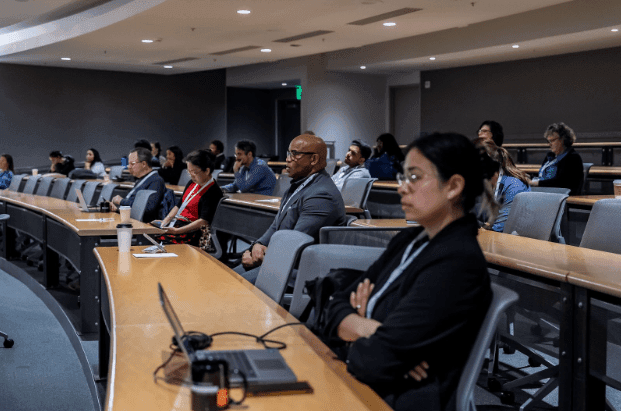
AUDIENCE Q&A
Audience Question: "With Only 25% Of Healthcare Spending Going To Staff Salaries And The Trend Toward System Consolidation, How Do You View Unionization Efforts Among Healthcare Workers, Including Doctors?"
Dr. Balch
" As an economist, I believe unionization is a valuable tool to protect workers' rights within a free-market healthcare system. It is a legitimate democratic method to achieve social and political gains. Unionization among medical staff and all health professionals can create a stronger political coalition. In politics, influence comes from money and votes. Without unionizing, healthcare workers may struggle to effectively advocate for industry changes. Importantly, most healthcare professionals are deeply committed to putting patients first, so unionization aligns well with delivering equitable, high-quality patient care."
Audience Question: "For Non-Small Cell Lung Cancer, There Is A Systemic Issue Involving The Cost Of Genetic Testing And The Incentives For Oncologists. How Can We Ensure That All Patients Receive Comprehensive Genetic Testing Before Starting Treatment? While This Testing Is Valuable, It Can Be Expensive, And Many Patients May Not Have Coverage."
Dr. Kessler
"We face a significant challenge. While many new technologies are impressive, we cannot afford them for everyone. Our current approach to rationing, from a public health and equity perspective, is poor. We end up giving very expensive treatments without clear guidelines on who should receive them. Without a system in charge, we lack robust studies to determine which advanced technologies offer the most public benefit and which should be limited. Economically, this approach is unsustainable and unfortunate."
Dr. Kolb
"Is there any evidence that less effective, lower-cost therapies actually save money for individuals or at the population level? The challenge is that patients often make uninformed decisions based on budget constraints. These decisions are rarely made at the pharmacy counter due to cost alone, nor are hospitals always considering the broader system costs of inadequate care, which can be very expensive."
Dr. Balch
"In cancer care, giving the wrong treatment at the wrong time can be very costly, both medically and financially. It makes far more sense to identify the right treatment for each patient from the start, even if it seems more expensive upfront. When you consider the full cost, starting with the wrong medication, often costing tens of thousands of dollars, only to switch later, it wastes money and time. Genetic testing can guide us to the most effective treatment for each patient, potentially saving costs overall. Some payers agree that forcing a one-size-fits-all approach is inefficient since precision medicine can deliver better outcomes without increasing total expenses."
Audience Question: "Can You Give An Example Of A Recent Improvement In The U.S. Health Care Policy That Improved Authority, And What Can We Learn From That, Pushing Forward?"
Dr. Kessler
"The expansion of Medicaid in the U.S. was a major public health achievement, though unfortunately it became highly politicized. The evidence clearly shows its positive impact, yet it remains a divisive issue. Organizations like the American Cancer Society deserve credit for recognizing the benefits without politicizing the conversation. Medicaid works, where the funding goes, it makes a difference."
Dr. Balch
"We often think of policy as something made by state legislatures, but many decisions that affect patients daily are made at the hospital, insurance plan, or vendor level. One area where we were on the cusp of major innovation was the growing recognition that the personal costs of care, like lack of access to food, housing, transportation, and caregiver support, drive disparities and increase healthcare costs. These social needs have long been treated as externalities, acknowledged but excluded from the healthcare system. We were beginning to integrate them into clinical care, a major step toward social innovation. Achieving this requires policy change at every level. We must not lose momentum. The future of equitable care depends on engineering social needs into patient-centered health care."
Dr. Kolb
"Clinical trial diversity and genetic testing will fundamentally change cancer survival rates. It is unrealistic to assume that populations with different ancestral environments, like Northern Europe, Africa, and South America, will respond the same way to the same drugs. For example, African and Northern European populations metabolize lenalidomide differently, yet nearly all participants in recent drug trials have been white. As a result, patients of African descent are often underdosed. It is not just somatic genetic diversity that matters, but also inherited genetic variation."
Audience Question: “Who Has The Most Power To Influence Affordability In Healthcare?”
Dr. Kolb
"I do not think the FDA holds the most power, but it has significant, underutilized influence. Take CAR T-cell therapies and T-cell engagers, for example. These are complex treatments, and while a dozen of them have been approved recently, most are only available at about 30 comprehensive cancer centers, largely in urban areas. That leaves out patients in rural communities or those who cannot travel far. The FDA approves drugs based on trials that are not just racially unrepresentative, but also geographically narrow. We lack dosing data for patients with renal failure, older adults, and those treated in community cancer centers, where 60% of patients actually receive their care. The FDA should require feasibility studies for administration in community settings, not just academic centers. That would help ensure more equitable access and practical usability of these treatments."
Dr. Kessler
"You can name many different actors: Congress, agencies, and institutions. But ultimately, meaningful change depends on legislation at both the federal and state levels."
Dr. Balch
"And at the end of the day, the real power lies in the hands of voters."
Audience Question: “What Advice Would You Give A Cancer Patient Who Cannot Afford The Treatment They Need?”
Dr. Kolb
"It takes a village. Addressing the rising cost of care requires pooling resources. There is no single solution. We know that medical debt, a real and debilitating form of cancer treatment toxicity, affects many individuals and families. The good news is that much of this debt can be resolved. There are AI tools that can analyze medical bills and identify errors or overcharges, and there are counselors who help patients navigate access to support. Some resources may be regionally specific, but finding and using them often requires a high level of expertise."
Dr. Balch
"Some patients come in uninsured or living in poverty, and the first step is to assess eligibility for programs like Medicaid, SNAP, CHIP, or low-income subsidies. There are resources available, though they are not enough, and I am not suggesting we settle for the current system. A particularly vulnerable group includes those who begin treatment, can afford care (often at 300–500% of the federal poverty level, with some insurance), but lose that ability over time. In cancer care, especially, costs related to transportation, food, housing, and caregiver burden pile up. Work disruptions worsen the situation, and these patients often fall through the cracks because they do not qualify for much help.
The key is to intervene before these patients stop showing up for treatment. We talk about early detection and screening for disease, but we also need to screen for financial distress. It is easy to identify patients in poverty at the start; it is much harder to spot those who will struggle six months into care.
We cannot wait until they screen positive for food insecurity. That is like waiting for a cancer diagnosis based on symptoms alone. Tools like the HOUSES Index can help identify patients likely to face affordability challenges early, allowing us to connect them with navigators, community health workers, and social support. Addressing these issues upfront is essential. If we do not, patients may drop out of care, leading to less effective and safer treatment.”
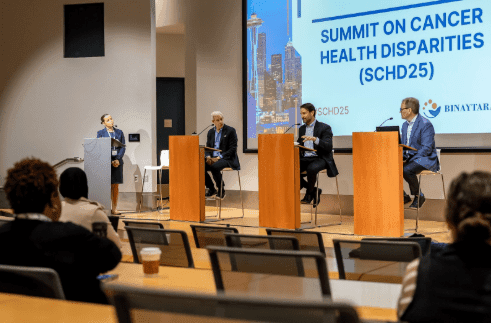
Closing Segment
Moderator: “If You Had A Billion Dollars In A Blank Slate To Redesign The U.S. Healthcare, Where Would You Start?”
Dr. Kessler
"I will focus less on system redesign and more on where to invest the money. We fail in so many ways in how we care for ourselves, and how poorly we use the resources we have. There is huge potential for improving health if we simply use what is already available more effectively."
Dr. Kolb
"My first reaction was, 'Only a billion?’ It does not go far. But health literacy is one key area. There are many important spaces where that money could make a difference."
Dr. Balch
"We are at a critical point between integrating social needs and health care. But doing that effectively requires a strong connection back to individuals and their communities. If I had a billion dollars to invest, I would start with community health workers. People who bridge the gap between the community and the health care institutions that serve them. I would also invest in needs navigators, not just clinical navigators. But those who help patients access the safety net, which itself is often inequitably distributed. Such investment is the foundational infrastructure we need to embed social needs care into the healthcare system.
And to spend that billion well, it will take everyone at this table.”
